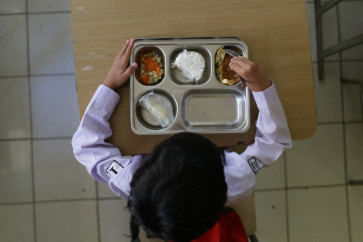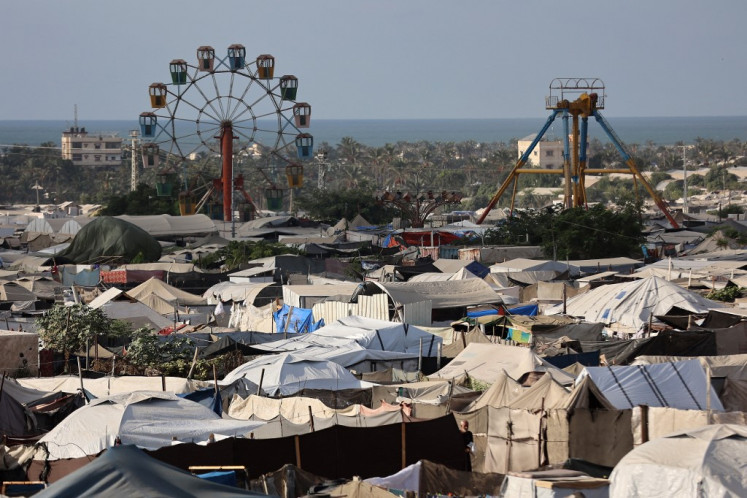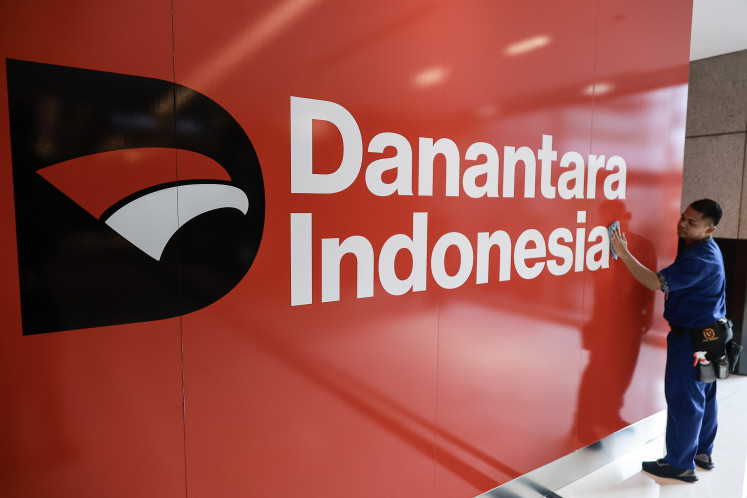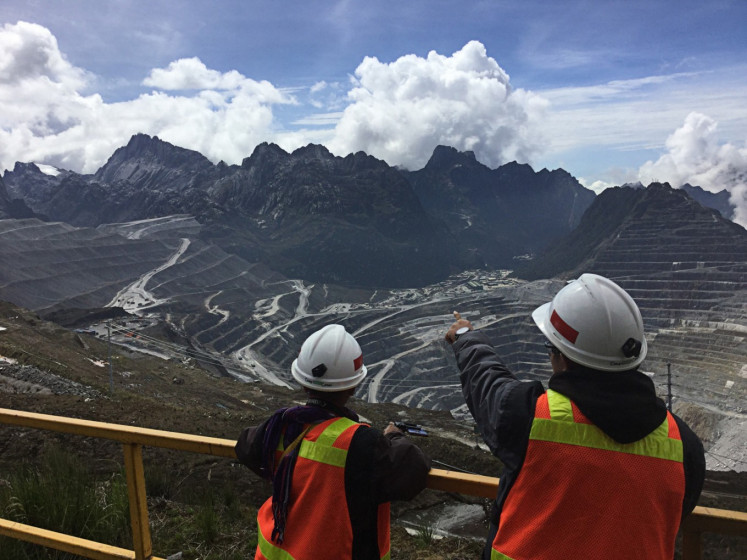Popular Reads
Top Results
Can't find what you're looking for?
View all search resultsPopular Reads
Top Results
Can't find what you're looking for?
View all search resultsWay Sekampung in critical condition
The Way Sekampung river, a major river that flows from the mountains of Bukit Barisan Selatan National Park in Tanggamus and West Lampung regencies and is a source of clean water for thousands of people, is severely contaminated, an expert says
Change text size
Gift Premium Articles
to Anyone
The Way Sekampung river, a major river that flows from the mountains of Bukit Barisan Selatan National Park in Tanggamus and West Lampung regencies and is a source of clean water for thousands of people, is severely contaminated, an expert says.
The river's watershed area, which is the source of clean water for residents in Bandarlampung, Kotaagung (Tanggamus), Metro regency, and a number of other cities in Lampung, is also severely damaged.
The director of the Lampung chapter of the Indonesian Forum for the Environment (Walhi), Hendrawan, said the contamination of the Way Sekampung watershed threatened the supply of fresh water to Lampung residents.
"Besides being a source of energy for the Batutegi power station, it is also a clean water source for the PDAM Way Rilau tap water company owned by the Bandarlampung municipality and an irrigation source for thousands of farmers," Hendrawan said.
According to Hendrawan, the European Union had provided financial assistance for a Way Sekampung river basin conservation project. However, deforestation in Bukit Barisan National Park has undone those efforts.
"The Way Sekampung restoration project must cover catchment areas, meaning a large-scale reforestation drive must be conducted in the park. The park is highly important because it is a source of three major rivers; the Way Sekampung, the Way Seputih and the Way Tulangbawang. Dozens of smaller rivers also originate in the park," Hendrawan said.
Data at the Lampung Irrigation Agency reveals that a 100-kilometer stretch of irrigation channels in the river's basin area which runs through Tanggamus, Metro and East Lampung regencies is damaged due to sedimentation.
As a result, thousands of farmers in Tanggamus, East Lampung, Central Lampung and Metro often face water shortages. The Batutegi and Argo Guruh reservoirs in Tanggamus and Lampung regencies, which are replenished by Way Sekampung, have lowered, affecting the operations of the 28-megawatt Batutegi hydro power station.
The Way Sekampung irrigation network spans around 510 kilometers and irrigates some 70,000 hectares of farmland.
Head of the Lampung Research Council Muhajir Utomo said that in Tanggamus regency alone, 112,700 hectares of the catchment area was in "critical condition", and that the damage was behind the decreasing water level of the Batutegi reservoir.
According to Muhajir, the Batutegi reservoir could be depleted by 2020 if no action is taken to rehabilitate the river basin.
The Head of the Way Sekampung and Way Seputih River Basin Management Center in Lampung, Lamris Sitompul, said much of the damage to the basins had been caused by unregulated settlement expansion.
According to Sitompul, the lampung provincial administration has carried out rehabilitation efforts in the past, including replanting 36,000 trees last year.
The critical areas -- 1,536,365.7 hectares in total -- are split into three categories: Severely damaged, damaged and lightly damaged.
The severely damaged areas span 174,646.8 hectares, the damaged areas 310,212 hectares and the lightly damaged areas 1,051,506.9 hectares. Separate are the potentially critical areas, which are 834,492.4 hectares in total and the unaffected areas that are not at risk, which span 594,010 hectares.










